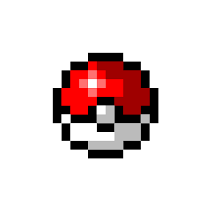"Now that that IVs aren't influenced by Pokedex number, here's a likely distribution (X-post from /r/PokemonGo)"
#PokemonGO: Note: This is basically a cross-post from /r/PokemonGo. Here's my original thread. Not really sure about crossposting etiquette, hopefully I'm not committing any faux pas. I know that /r/PokemonGOIVs exists, but I was hoping the post would be OK here for a wider audience. Will happily delete if appropriate.A very good question was asked the other day (props to, er, /u/AssScabies). I didn't get all the details right in my comment, didn't exactly answer the question asked, plus I thought a good answer might warrant its own post. With only slight further ado, I present the table:The Total IVs are just that; a 6/8/10 Pokemon would have a total of 24. Perfection is Total IVs/45 as a percent. The Chances of this column is the percentage of wild Pokemon you'd expect with this number of Total IVs, calculated by Possibilities/163, where the Possibilities is a count of all possible IV combinations for a Pokemon with the given number of Total IVs (e.g. 1 way to be perfect, 3 ways to have 44 total IVs, etc). The Chances of finding better is for finding Pokemon with a strictly higher Total IV count.Total IVsPerfection (%)Chances of finding better (%)Chances of this (%)Possibilities00.0099.980.02112.2299.900.07324.4499.760.15636.6799.510.241048.8999.150.3715511.1198.630.5121613.3397.950.6828715.5697.070.8836817.7895.971.1045920.0094.631.34551022.2293.021.61661124.4491.111.90781226.6788.892.22911328.8986.332.561051431.1183.402.931201533.3380.083.321361635.5676.423.661501737.7872.463.961621840.0068.264.201721942.2263.874.391802044.4459.334.541862146.6754.694.641902248.8950.004.691922351.1145.314.691922453.3340.674.641902555.5636.134.541862657.7831.744.391802760.0027.544.201722862.2223.583.961622964.4419.923.661503066.6716.603.321363168.8913.672.931203271.1111.112.561053373.338.892.22913475.566.981.90783577.785.371.61663680.004.031.34553782.222.931.10453884.442.050.88363986.671.370.68284088.890.850.51214191.110.490.37154293.330.240.24104395.560.100.1564497.780.020.07345100.000.000.021Assumptions: Now that the pokedex bug is fixed, I've assumed that each wild Pokemon has a 0-15 dice rolled for each of its three IV categories, so that 10/5/13 is as likely as 5/13/10 or 15/15/15 (but of course, there are many more IV combinations for 28 total IVs compared to 45 total). Egg hatching would not be included here, since it is believed that the IV probabilities are considerably different.Commentary: 100% perfection is quite rare, but even 90% or better is pretty rare as well; theres only about a 0.5% chance (still nearly 50 times more likely than perfect, at 0.02%) of finding one. Even IVs many would consider bad aren't that common. For example, take 30/45 IVs, or 66.6% perfection. You might expect 1/3 of all wild Pokemon to have better IVs, when (in theory) only 1/6 of all Pokemon should. At 80% perfection, it's not 20% of wild Pokemon with better IVs, it's only 4%, and for the 90% example earlier, not 10% of wild Pokemon better but a scant 0.5%.Finally, we'll look at the likelihood of various team appraisals.AppraisalPerfectionLikelihoodBest82.2--100%4.03%2nd Best66.7--80.0%15.89%2nd Worst51.1--64.4%30.08%Worst00.0--48.9%50.00%Data Generation:Everything comes from counting the number of ways a Pokemon can have N out of 45 IVs, then a little Python (technically Sage).How those counts were obtained: combinatorics. In particular, stars and bars paired with inclusion-exclusion depending on the total IV count.An example: Suppose you want to count possibilities for N = 39 total IVs. By stars and bars, there are (39 + 2) choose (2) possibilities. But this allows for 16+ IVs in either one or two categories. Your final count would be[(39 + 2) choose (2)] - 3[(39 - 16 + 2) choose (2)] + 3[(39 - 32 + 2) choose (2)].Things change slightly when you have 31 or fewer total IVs, then again at 15 or fewer total IVs.Bonus: Who can explain the undulating (semi-)triangular numbers that show up in the the possibility counts? 1 for perfection, 3 for one less, 6 for two less, etc. But then once you hit 30 IVs, the pattern switches in a semi-triangular manner (add 14, then add 12, etc). I have a sense of what's happening for the highest and lowest IV totals, but not at those boundaries. It might be a fun problem. via /r/TheSilphRoad http://ift.tt/2dzLVKf
"Now that that IVs aren't influenced by Pokedex number, here's a likely distribution (X-post from /r/PokemonGo)"
!["Now that that IVs aren't influenced by Pokedex number, here's a likely distribution (X-post from /r/PokemonGo)"]() Reviewed by The Pokémonger
on
03:58
Rating:
Reviewed by The Pokémonger
on
03:58
Rating:


No comments